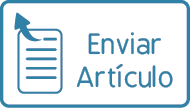Estudio del efecto del herrado sobre la locomoción equina mediante el empleo de sensores inerciales
DOI:
https://doi.org/10.24215/15142590e086Palabras clave:
equinos, herrado, cinemática, sensores inerciales, registro de datosResumen
Este artículo describe el diseño e implementación de un sistema registrador de datos ad hoc, para el monitoreo de los principales efectos cinemáticos que imponen los protocolos de desvasado y herrado sobre el equilibrio dinámico del pie en equinos. Este método constituye una solución de bajo costo, que utiliza sensores de mediciones inerciales (IMU’s). Se expone el uso de entornos abiertos para la representación de datos y se analizan estadísticamente las magnitudes medias de aceleración y velocidad angular registradas en los cascos de la población equina estudiada a los 0, 15, 30 y 40 días después de implementar un protocolo de desvasado y herrado estándar. Los resultados obtenidos indican diferencias significativas entre las mediciones (p<0,05). El acondicionamiento efectuado influyó favorablemente sobre el equilibrio dorsopalmar, vertical y lateromedial del pie, amplió la superficie de carga sobre la región palmar y mejoró la ejecución de las instancias de contacto y de apoyo hasta el día 40, cuando la carga tendió a distribuirse de forma asimétrica en sentido lateromedial. La asociación entre el desvasado y herrado y el equilibrio del pie fue significativa (r=0,97), por lo que estas prácticas y la frecuencia de su realización deberían ser tenidas en cuenta a la hora de evaluar su efecto en el animal.
Referencias
Antonioli ML, Canola PA, de Carvalho JRG, Fonseca MG, Ferraz GC. 2023. Immediate effect of hoof trimming on hoof and thoracic joint angles in Mangalarga mares. Animals: an open access journal from MDPI. 13(15):2490. https://doi.org/10.3390/ani13152490
Atkins CA, Pond KR, Madsen CK, Moorman VJ, Roman Muniz IN, Archibeque SL, Grandin T. 2019. Sensor analysis and initial assessment of detectable first hoof contacts and last break-overs as unique signal fluctuations for equine gait. Translational Animal Science. 3(4):1389-98. https://doi.org/10.1093/tas/txz089
Chateau H, Degueurce C, Jerbi H, Crevier-Denoix N, Pourcelot P, Audigiéa F, PasquiBoutard V, Denoix JM. 2002. Three-dimensional kinematics of the equine interphalangeal joints: articular impact of asymmetric bearing. Veterinary Research. 33(4):371-82.
https://doi.org/10.1051/vetres:2002023
Clayton HM, Hobbs SJ. 2017. The rol of biomechanical analysis of horse and rider in equitation science. Applied Animal Behaviour Science. 190:123-32. https://doi.org/10.1016/j.applanim.2017.02.011
Davidson EJ. 2018. Lameness evaluation of the athletic horse. The Veterinary Clinics of North America: Equine Practice. 34(2):181-91. https://doi.org/10.1016/j.cveq.2018.04.013
Greve L, Dyson S. 2020.What can we learn from visual and objective assessment of nonlame and lame horses in straight lines, on the lunge and ridden? Equine Veterinary Education. 32(9):479-91. https://doi.org/10.1111/eve.13016
Hagen J, Bos R, Brouwer J, Lux S, Jung FT. 2021. Influence of trimming, hoof angle and shoeing on breakover duration in sound horses examined with hoof‐mounted inertial sensors. The Veterinary Record. 189(4):e450. http://dx.doi.org/10.1002/vetr.450
Horan K, Coburn J, Kourdache K, Day P, Harborne D, Brinkley L, Carnall H, Hammond L, Peterson M, Millard S, Pfau T. 2021. Influence of speed, ground surface and shoeing condition on hoof breakover duration in galloping thoroughbred racehorses. Animals: an open access journal from MDPI. 11(9):2588. https://doi.org/10.3390/ ani11092588
Ishihara A, Bertone AL, Rajala Schultz PJ. 2005. Association between subjective lameness grade and kinetic gait parameters in horses with experimentally induced forelimb lameness. American Journal of Veterinary Research. 66(10):1805-15.
https://doi.org/10.2460/ajvr.2005.66.1805
Keegan KG, Yonezawa Y, Pai PF, Wilson DA. 2002. Accelerometer-based system for the detection of lameness in horses. Biomedical Sciences Instrumentation. 38:107-12.
Kelleher ME, Burns TD, Werre SR, White NA.2021. The immediate effect of routine hoof trimming and shoeing on horses'gait. Journal of Equine Veterinary Science. 102:103633. https://doi.org/10.1016/ j.jevs.2021.103633
Leelamankong P, Estrada R, Mählmann K, Rungsri P, Lischer, C. 2020. Agreement among equine veterinarians and between equine veterinarians and inertial sensor system during clinical examination of hindlimb lameness in horses. Equine Veterinary Journal. 52(2):326-31. https://doi.org/10.1111/evj.13144
Leśniak K, Williams J, Kuznik K, Douglas P. 2017. Does a 4-6week shoeing interval promote optimal foot balance in the working equine? Animals: an open access journal from MDPI. 7(4):29. https://doi.org/10.3390/ani7040029
Moorman VJ, Reiser RF, Peterson ML, McIlwraith CW, Kawcak CE. 2013. Effect of forelimb lameness on hoof kinematics of horses at a walk. American Journal of Veterinary Research. 74(9):1192-7. https://doi.org/10.2460/ajvr.74.9.1192
Serra Bragança FM, Rhodin M, Van Weeren PR. 2018.On the brink of daily clinical application of objective gait analysis: what evidence do we have so far from studies using an induced lameness model? The Veterinary Journal. 234:11-23.
Publicado
Número
Sección
Licencia
Derechos de autor 2024 Paula Cánepa, Juan Manuel Chilo, Martin Rodolfo Chilo, Marcos Gadze, Viviana Edith De Palma

Esta obra está bajo una licencia internacional Creative Commons Atribución-NoComercial-SinDerivadas 4.0.
Los autores/as conservan los derechos de autor y ceden a la revista el derecho de la primera publicación, con el trabajo registrado con la licencia de atribución de Creative Commons, que permite a terceros utilizar lo publicado siempre que mencionen la autoría del trabajo y a la primera publicación en esta revista.

Analecta Veterinaria por Facultad de Ciencias Veterinarias se distribuye bajo una Licencia Creative Commons Atribución-NoComercial-SinDerivar 4.0 Internacional.




























